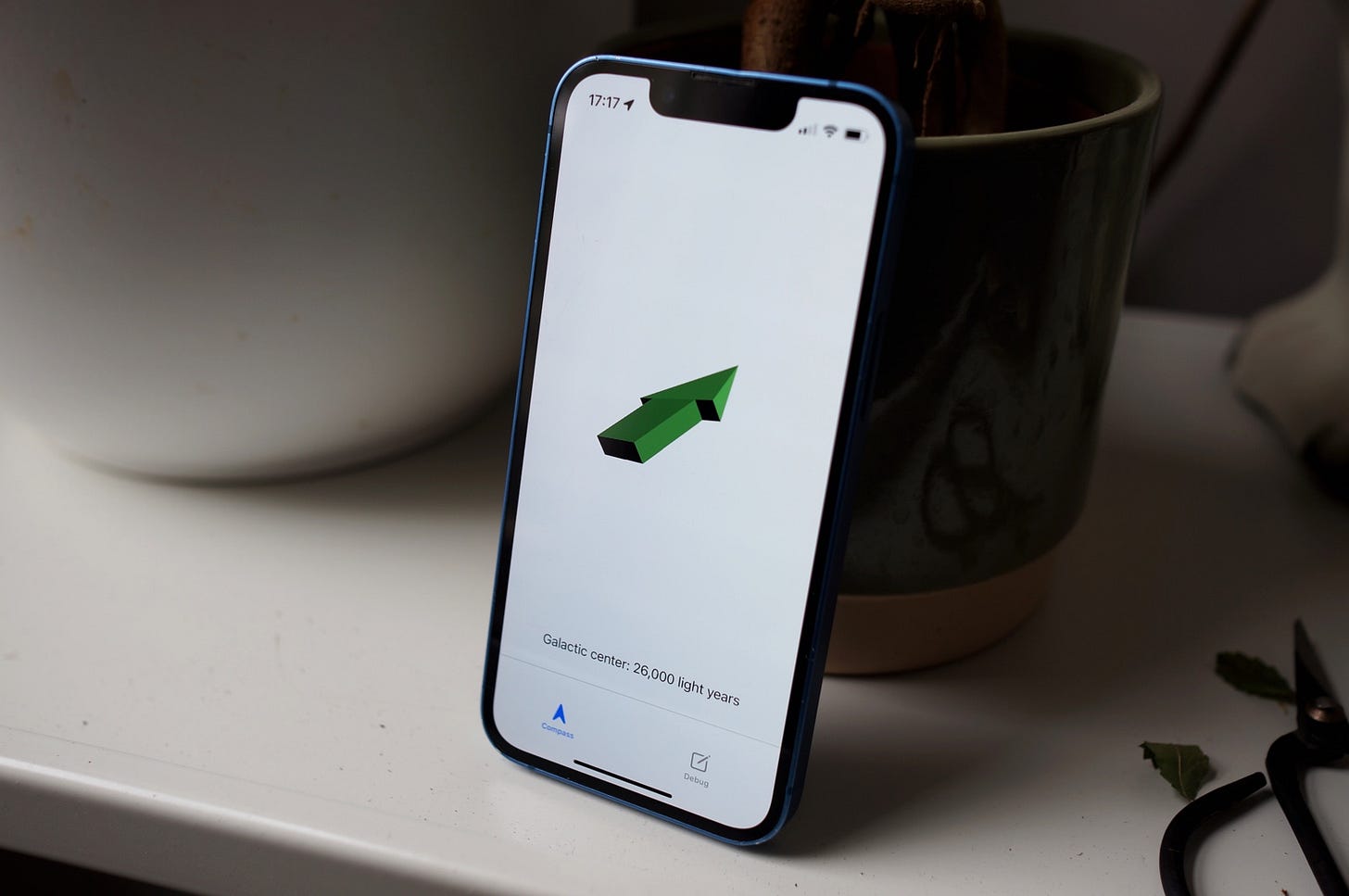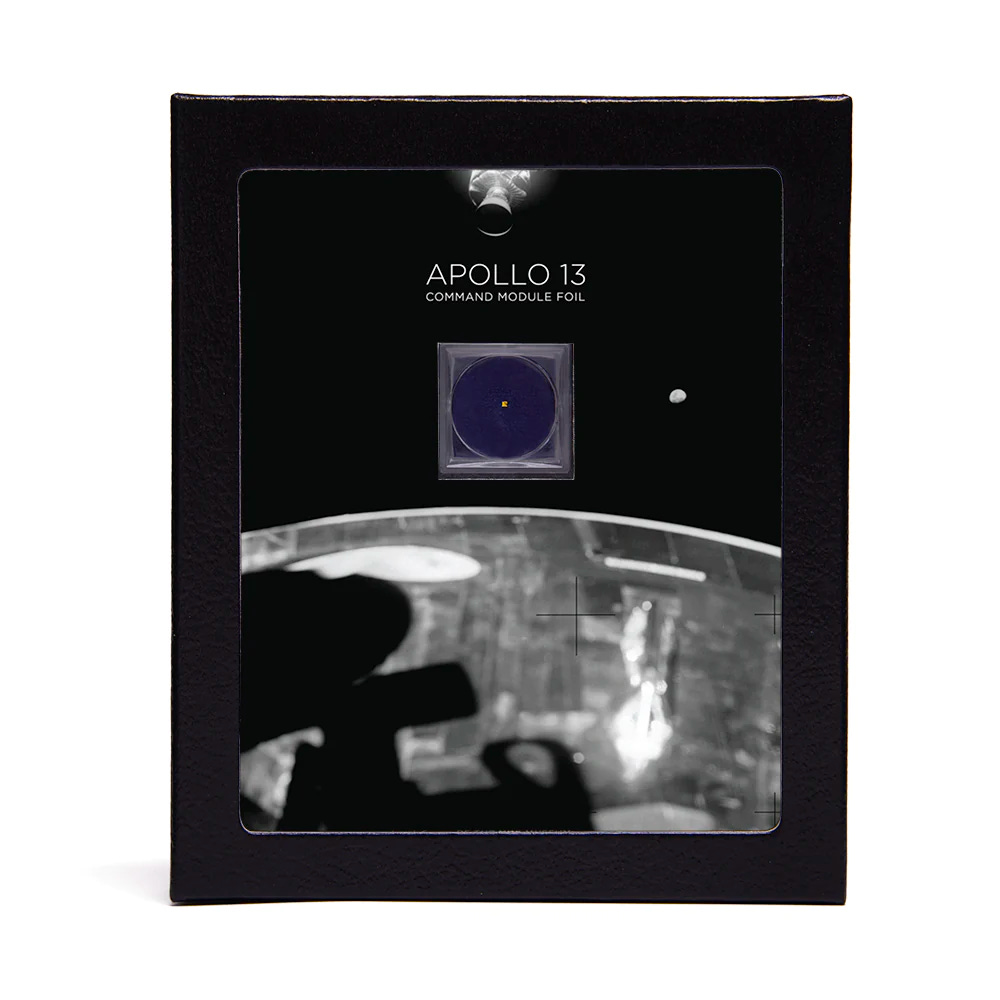#38: Galactic Compass, Mini Museum, Tetris, Starlink Lasers, AI Job Loss, Snapdragon in Space, and more!
Hi everyone!
A few months ago, I built an airplane lamp for my son's room. I wanted to make it as realistic as possible, and so I wondered: what are the blinking lights on planes and could I recreate them?
A friend of mine told me these are navigation lights. Green on the right wing, red on the left. They can be used to determine if a craft is moving towards you or away from you. Kind of important in case your radar doesn't work. Genius!
My son's lamp definitely needed this.
Here's the result:
The lamp is made from two pieces of MDF. The top part is smaller to hide the addressable LED strip from view. I then used a piece of software called WLED to control the individual LEDs and recreate the navigation lights!
I find it amazing that people realized it could be problematic if two craft encountered each other without radar and came up with navigation lights. A super simple and highly effective solution.
My son doesn’t care about the navigation lights at all. But the controller ships with all kinds of effects that appeal to toddlers.
But enough about my handy work. Time for some geeky things.
Enjoy this Simply Explained newsletter!
Xavier
🤓 Cool Stuff I Found on the Internet
Compass that points to the center of the Milky Way
Matt Webb wanted to create a compass that points to Sagittarius A*, the supermassive black hole at the center of our Milky Way. The only problem? He can't code. So he enlisted the help of ChatGPT to build an iPhone app and get it published to the App Store!
A fun question about insider trading
Is it insider trading if you short Boeing stock while you're inside of an airplane with a blown out door? It's a silly (but entertaining) question.
Higher cars are more dangerous
Cars are getting bigger and bigger, as people prefer SUV over more compact cars. But that negatively affects the safety of pedestrians. This study found that a 10cm increase in front-end height causes a 22% increase in pedestrian fatality risk.
Mini Museum: own a piece of space history
Want to own a piece of air or space history? The Mini Museum sells all kinds of artifacts, like pieces of the Concorde, the Apollo 11 command module foil, the Space Shuttle, and even small meteorites. Exceptional gifts for fellow nerds!
Beating Tetris
A 13-year-old advanced to level 157 in the original version of Tetris and broke the game! I was surprised to learn how popular Tetris still is. There's even a Classic Tetris World Championship. I was so intrigued that I watched the Tetris movie and learned about the origins of Tetris (Soviet Union) and how it (chaotically) got licensed and commercialized.
👽 Space
Ingenuity was revolutionary
In the last newsletter, we bid farewell to our favorite (and only) helicopter on Mars. In this edition, I want to highlight why Ingenuity was so revolutionary. Traditionally NASA uses really old but battle-tested processors onboard spacecraft. Ingenuity needed to be very light, so NASA used a Snapdragon processor. Yep, the ones you find in smartphones. That processor is more powerful than all processors ever used by NASA on any mission!
Starlink's Lasers transfer 42 million gigabytes per day
A SpaceX engineer shared details about the lasers onboard of Starlink satellites. These laser links create a mesh network in space. When a satellite can't contact a ground station, it uses the laser links to relay data to other nearby satellites that might be in range of another ground station. SpaceX has 9000 operational laser links that transmit 42 petabytes of data each day! Checkout the Simply Explained video about Starlink here.
Fungi survives radiation and Martian conditions
A team of researchers took fungi from Antartica to test their survival in Martian-like conditions. They placed the fungi in the EXPOSE-E platform outside of the International Space Station and exposed them to radiation for 18 months. The result: the fungi’s DNA was surprisingly stable, once again proving that life is everywhere and can survive really harsh conditions.
🧠🤖 Artificial intelligence
Sora: OpenAI's text-to-video model
OpenAI is on fire! The company wants to raise 7 trillion dollars to build its own AI chips and now released a text-to-video model that produces incredible results. It can generate 1 minute videos from a text prompt or still image. It's only available for researchers first though...
Former DreamWorks CEO: "AI will take 90% of artist jobs"
Jeffrey Katzenberg predicts AI will eliminate up to 90% of artist jobs in animated films. His statement has sparked a considerable debate within the sector, with many concerned about the implications for creative jobs and the overall quality of future animated content. Guess we’ll see the “Golden Prompt Awards” in the future...
System prompt of ChatGPT has leaked
Someone tricked ChatGPT into giving up the system prompt. This message sets the boundaries for the conversation and influences how the assistant should behave. It amazed me to see how we can control a multi-trillion parameter model with ordinary English!
Spotting AI-Created Images: DALL-E 3 watermarks
OpenAI’s latest update has added watermarks to AI generated images. Both visible and invisible watermarks can be used to verify if an image is AI-generated or not. It’s designed to address concerns over deep fakes and misinformation. Watermarks aren’t perfect, as resizing or compressing an image could render them useless. But it’s a step in the right direction. There’s also a tool you can use to check if an image contains these types of watermarks.
Epoch Database
This website visualizes how much compute resources were used to train AI model. You can see massive gains since 2010 as models are getting more complex and use a ton of compute to train.








